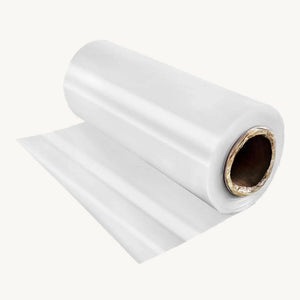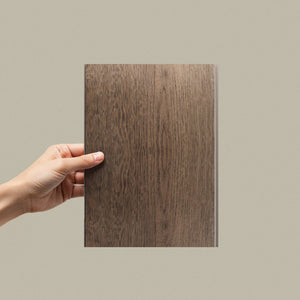Certifié Floorscore
What Does it Mean to Be FloorScore Certified?
Every McMillan hardwood, vinyl, and Fiber Baord floor is FloorScore certified. FloorScore is the most recognized indoor air quality (IAQ) certification standard for hard surface flooring materials, adhesives, and underlayments. It was developed by SCS (Scientific Certification Systems), a third party certifier, with the Resilient Floor Covering Institute (RFCI), a leading industry trade association of flooring manufacturers and suppliers.

The process:
This voluntary, independent certification program tests and measures risks to indoor air quality. To do this, SCS does the following:
Works with the manufacturer to identify appropriate samples for testing
Reviews VOC emission test reports generated by independent testing laboratories
Determines if the test results meet the California Section 01350 requirements for individual VOCs of concern
Inspects manufacturing plants to review product formulas, processing, and quality control in order to determine how the FloorScore seal may be used
What it tests for:
Formaldehyde – The tested product must emit less than or equal to 16.5 µg/m3
Acetaldehyde – The tested product must emit less than or equal to 9 µg/m3
All other organic chemicals with established CRELs (Chronic Reference Exposure Levels) – The tested product must emit less than or equal to 1/2 the CREL as listed in the latest edition of the Cal/EPA OEHHA list of chemicals with non-cancer CRELs.
So what does this mean for you, the customer?
Most of us spend as much as 90% of our lives indoors. (Yikes.) If you’re breathing poor quality air, you could risk facing a variety of health problems, including headaches, dizziness, and more serious long-term conditions. Installing FloorScore certified low VOC flooring means you’re making the healthier choice for your home and family.
If you’re a builder, working with FloorScore certified materials can also help you qualify for a variety of green building specifications like LEED, BREEAM, WELL Building Standard, and more.
Benefits
- Qualify for: LEED v4, WELL Building Standard, BREEAM International, BREEAM UK, Collaborative for High Performance Schools (CHPS), Green Globes, Green Guide for Health Care 2.2 and more
- Meets criteria for EPA ecolabel and GSA procurement requirements
- Contributes to better indoor air quality
- Products can be sold to schools and health care facilities by conforming with California 01350
FAQ
What types of products are eligible for FloorScore® certification?
Cementitious Flooring, Ceramic, Cork Flooring, Flooring Adhesives, Hardwood Engineered and Bamboo Flooring, Laminate Flooring, Linoleum, Polymeric Flooring, Porcelain, Raised Flooring, Rubber Flooring, Underlayments, Vinyl Composite Tile (VCT), Vinyl Sheet Flooring, Vinyl Tile and Luxury Vinyl Tile (LVT), Wall Base, Stair Treads, and Accessories.
What does it take to get certified?
Flooring products must undergo the evaluation process, which includes a review of the product’s formulation and the manufacturing site’s document control system, an onsite audit, and product emissions testing.
Does FloorScore meet CA 01350? Which VOCs are tested?
FloorScore tests for 35 individual Volatile Organic Compounds (VOCs) specified by the California Standard Method for VOC Emissions Testing and Evaluation (Standard Method V1.2), otherwise known as CA Section 01350.
What is the difference between the CARB and FloorScore certifications?
The regulatory formaldehyde emissions requirements per the California Air Resources Board (CARB) Airborne Toxic Control Measure (ATCM 93120) and the EPA Formaldehyde Rule applies solely to formaldehyde emissions from composite wood panel products (e.g. MDF, particleboard, hardwood plywood (veneer or composite core).
The voluntary green building indoor air quality certification of FloorScore applies to finished flooring products tested for 35 individual VOC emissions (including formaldehyde).
What are Volatile Organic Compounds (VOCs)?
The US EPA defines VOCs as “any compound of carbon, excluding carbon monoxide, carbon dioxide, carbonic acid, metallic carbides or carbonates, and ammonium carbonate, which participates in atmospheric photochemical reactions." VOC gases are emitted from certain solids or liquids, and include a variety of organic chemicals, some of which may have short-term and long-term adverse health effects. Concentrations of many VOCs are consistently higher indoors (up to ten times higher) than outdoors. Find more information on VOCs at RFCI and CDPH.
Do you test for phthalates?
The FloorScore standard is a VOC emission based standard for indoor air quality and does not include phthalates within its scope because it is not considered an emission source when manufactured in products like vinyl flooring. Primary exposure concerns for phthalates occur through ingestion, such as with toys or plastic bottles. Manufacturers may choose to have products tested for phthalate content at a qualified lab.


